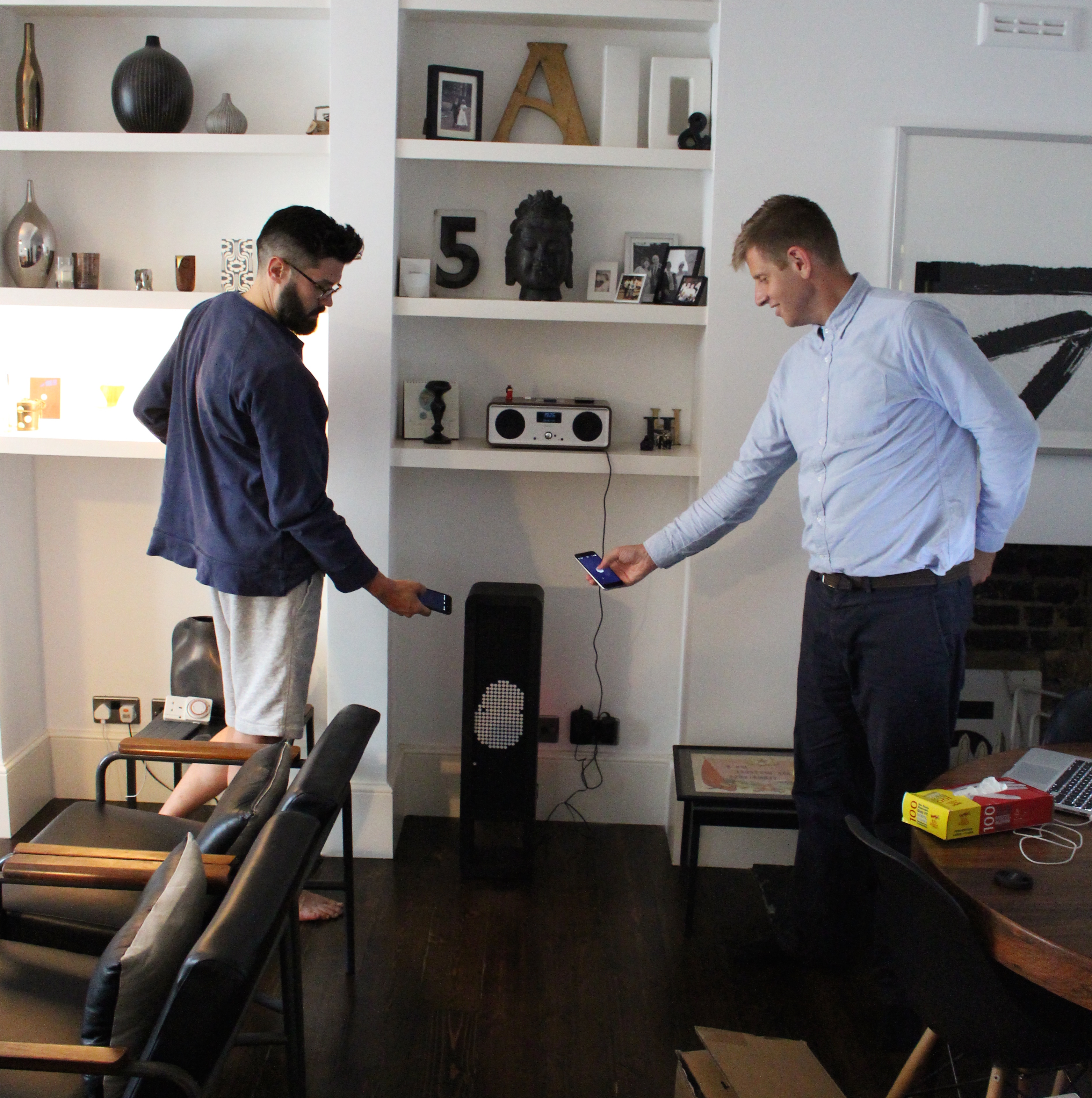Family Rituals - Family Two
September 2013 - September 2015electronics, software, bespoke design, ethnography, openlab
electronics, software, bespoke design, ethnography, openlab


Family Two is Hywel and Jesper, who live in East London. Hywel works in fashion, he is a lecturer and a freelance writer, and is primarily London based. Jesper works in the hospitality industry, and is typically away from home up to eight times a year on both short and longer trips, sometimes for several months at a time. Hywel and Jesper are one of the five families we worked with in the Family Rituals 2.0 study.
We designed and built a bespoke technology for Hywel and Jesper that would create moments of reflection for them; allowing us to talk about their work/life balance and their attitudes to working away from home. We framed this around the everyday rituals of the home, which are missed in this separation.
Getting to know Hywel and Jesper through interviews and the materials they generated from a set of cultural probes revealed glimpses of their home and working lives. We found much inspiration in their attitude to time keeping and routine, Jesper's love of travel and Hywel's design sensibility. While they may be regularly seprated, they take frequent holidays together which are keenly anticipated. This anticipation became the focus of our bespoke design for them.
Anticipation of Time Together counts down to a shared event, typically days or weeks away. Hywel and Jesper's iPhones allow them to set the timer but only together and interact with the display when they are at home or away. The machine is a flip-dot display, a mechanical display that consciously references the departure boards of airports and railway stations. The flipping of dots produces a sound that contrasts moments of change, like a ticking clock or the drama of a full display update.
The resolution and form of the display best suited animations of abstract shapes and representations of long periods of passing time. We were particularly inspired by sand timers and the pitch drop experiments; the display was configured vertically, to allow time to fall and fill. We were consciously making an exemplar of Slow Technology [PDF]. When the anticipated time arrives there is a prolonged celebration with a rapidly changing animation.
All interactions with the display are through the couple's existing iPhones. The display's only point of external interaction is a power switch. While the interface can be used remotely, we wanted to structure ritual acts around the machine when both are present. Using Apple's iBeacon proximity technology we were able to estimate the distance between each phone and the display, this allowed us to create a series of proximate interactions. We enjoyed the Cold War film language of double locks and secure systems that require two people to initiate a sequence.
The display contains two 14 x 28 flip-dot units controlled by a Raspberry Pi 2 running openFrameworks, there are USB adapters for WiFi, Bluetooth 4.0 (to advertise the iBeacon) and RS485 (to talk to the display).
Displayed at the Science Gallery's HOME\SICK Show (May 2015), at the London Design Festival (September 2015) and at the Victoria and Albert Museum's Digital Design drop-in (November 2015).
This was developed at Open Lab, Newcastle University in collaboration with the Helen Hamlyn Centre for Design at the Royal College of Art, as part of the Family Rituals 2.0 project funded by the EPSRC.
Ethnography: Paulina Yurman, David Chatting.
Design: David Chatting, Paulina Yurman, David Kirk.
Fabrication: Bob Moore Prototypes, David Chatting.
Electronics and Software: David Chatting.
Film: David Green, David Chatting (with thanks to Paulina Yurman).